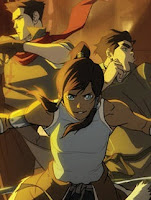My New and Reviews
Last week was the last full week of the year! I’m looking forward to what 2013 might bring. Today ends the Hikaru no Go/Game Manga Manga Moveable Feast. I had two contributions for the Feast this time around. Yumi Hotta and Takeshi Obata’s Hikaru no Go is a fantastic series; I was excited to see it selected for the Feast. For my first contribution, I reviewed the first volume of Hikaru no Go. Keeping with the Feast’s game theme, I also posted some random musings on mahjong manga. I love mahjong, and it’s very unlikely any mahjong manga will be licensed in English, but references to the game can be found all over the place in manga. Not related to the Manga Moveable Feast but also posted last week was the final manga giveaway for the year. There’s still time to enter for a chance to win the first volume of Saki Hiwatari’s shoujo science fiction epic Please Save My Earth!
I was also saddened to learn last week that Keiji Nakazawa, survivor of the atomic bombing of Hiroshima and creator of Barefoot Gen, passed away from lung cancer at the age of 73. In the past, I reviewed both the first volume of Barefoot Gen and Nakazawa’s autobiography Hiroshima: The Autobiography of Barefoot Gen. Jonathan Clements also recently reprinted his interview with Nakazawa from a few years ago. Nakazawa and his work will be missed.
Quick Takes
 Blood Lad, Omnibus 1 (equivalent to Volumes 1-2) by Yuuki Kodama. I wasn’t planning on reading Blood Lad, but I recently heard some good things about the series. For the most part, Blood Lad was a lot of fun. But it’s a pity that the plot hinges on what is probably the weakest element in the entire manga—Yanagi Fuyumi, a human girl who’s fallen into the demon world. Unfortunately, she’s all boobs and no personality. But I do like the rest of the characters, particularly Staz, a vampire who’s obsessed with human, and specifically Japanese, pop culture. I was a little surprised that Blood Lad is a seinen series; it feels more like shounen to me. I’m not in a rush to pick up the next omnibus, but I certainly wouldn’t turn it away, either.
Blood Lad, Omnibus 1 (equivalent to Volumes 1-2) by Yuuki Kodama. I wasn’t planning on reading Blood Lad, but I recently heard some good things about the series. For the most part, Blood Lad was a lot of fun. But it’s a pity that the plot hinges on what is probably the weakest element in the entire manga—Yanagi Fuyumi, a human girl who’s fallen into the demon world. Unfortunately, she’s all boobs and no personality. But I do like the rest of the characters, particularly Staz, a vampire who’s obsessed with human, and specifically Japanese, pop culture. I was a little surprised that Blood Lad is a seinen series; it feels more like shounen to me. I’m not in a rush to pick up the next omnibus, but I certainly wouldn’t turn it away, either.
 Blue Spring by Taiyo Matsumoto. I sought out Blue Spring specifically for the story “Mahjong Summer,” but I also happen to be a fan of Matsumoto’s work in general. I really liked this collection of loosely related stories about the delinquent, disillusioned, and apathetic students of Kitano High School. The teachers don’t care about what’s going on at the school and the students care even less. They are bored with school and life and seek out ways to occupy themselves before entering adulthood: playing dangerous games, getting involved with gangs and yakuza, showing off and talking shit, and so on. The school itself is rundown and covered with graffiti both inside and out. There’s a touch of the surreal to Blue Spring which is one of the things that makes the manga work so well.
Blue Spring by Taiyo Matsumoto. I sought out Blue Spring specifically for the story “Mahjong Summer,” but I also happen to be a fan of Matsumoto’s work in general. I really liked this collection of loosely related stories about the delinquent, disillusioned, and apathetic students of Kitano High School. The teachers don’t care about what’s going on at the school and the students care even less. They are bored with school and life and seek out ways to occupy themselves before entering adulthood: playing dangerous games, getting involved with gangs and yakuza, showing off and talking shit, and so on. The school itself is rundown and covered with graffiti both inside and out. There’s a touch of the surreal to Blue Spring which is one of the things that makes the manga work so well.
 Paradise Kiss, Parts 1-2 by Ai Yazawa. I don’t have a particular interest in fashion which is one of the reasons I haven’t picked up Paradise Kiss until now. It really is a shame I took so long because the series is fantastic. Yazawa excels at writing characters. They all have their histories and faults. They’re not always likeable, but they always come across as real people. I’m particularly fascinated by George in Paradise Kiss. He’s a hard person to read, and there’s a reason for that. He’s manipulative and a bit twisted, but he’s been damaged and hurt in the past, too. After reading part of Nana and now first two-thirds of Paradise Kiss, I am extremely impressed by Yazawa’s work; she is a phenomenal creator.
Paradise Kiss, Parts 1-2 by Ai Yazawa. I don’t have a particular interest in fashion which is one of the reasons I haven’t picked up Paradise Kiss until now. It really is a shame I took so long because the series is fantastic. Yazawa excels at writing characters. They all have their histories and faults. They’re not always likeable, but they always come across as real people. I’m particularly fascinated by George in Paradise Kiss. He’s a hard person to read, and there’s a reason for that. He’s manipulative and a bit twisted, but he’s been damaged and hurt in the past, too. After reading part of Nana and now first two-thirds of Paradise Kiss, I am extremely impressed by Yazawa’s work; she is a phenomenal creator.
 The Prime Minister’s Secret Diplomacy by Youka Nitta. Embracing Love is one of my favorite boys’ love series, and so I was looking forward to trying another work by Nitta. Unfortunately, I can’t say that I was particularly impressed by The Prime Minister’s Secret Diplomacy. Although I liked the story’s setup—two diplomats navigating their affair and liaisons, taking both personal and political risks in order to do so—I ended up fairly bored with the manga as a whole. And, except for a few brief moments, I wasn’t really feeling any chemistry between the two men, either. Apparently, The Prime Minister’s Secret Diplomacy is the beginning of a series; there’s at least one more volume, but it doesn’t appear to have been licensed in English.
The Prime Minister’s Secret Diplomacy by Youka Nitta. Embracing Love is one of my favorite boys’ love series, and so I was looking forward to trying another work by Nitta. Unfortunately, I can’t say that I was particularly impressed by The Prime Minister’s Secret Diplomacy. Although I liked the story’s setup—two diplomats navigating their affair and liaisons, taking both personal and political risks in order to do so—I ended up fairly bored with the manga as a whole. And, except for a few brief moments, I wasn’t really feeling any chemistry between the two men, either. Apparently, The Prime Minister’s Secret Diplomacy is the beginning of a series; there’s at least one more volume, but it doesn’t appear to have been licensed in English.
 Hikaru no Go, Episodes 1-15 directed by Shin Nishizawa. I love the Hikaru no Go manga, but up until now haven’t seen any of the anime adaptation. I’m enjoying the anime, but the manga is definitely the superior of the two. The art and pacing of the story are better in the manga and the anime isn’t as forgiving if you don’t already understand go. Granted, the anime does teach a little more about the game than the manga does. It even includes short go lessons with professional player Yukari Umezawa (who was also the supervisor for the manga) at the end of each episode. Sai seems to have lost much of his cute side, which made me a little sad; his serious nature is more prominent in the anime.
Hikaru no Go, Episodes 1-15 directed by Shin Nishizawa. I love the Hikaru no Go manga, but up until now haven’t seen any of the anime adaptation. I’m enjoying the anime, but the manga is definitely the superior of the two. The art and pacing of the story are better in the manga and the anime isn’t as forgiving if you don’t already understand go. Granted, the anime does teach a little more about the game than the manga does. It even includes short go lessons with professional player Yukari Umezawa (who was also the supervisor for the manga) at the end of each episode. Sai seems to have lost much of his cute side, which made me a little sad; his serious nature is more prominent in the anime.















